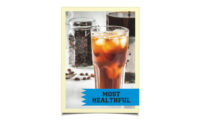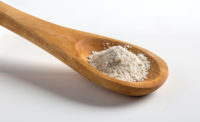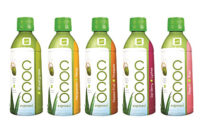Flexitarian trends are impacting dairy, nondairy beverages

In 2017, Target Corp. released a TV commercial in which the father says that he’s going on a milk run and asks what everyone wants. One child says skim milk, one says chocolate milk and the third child says that she’s not doing dairy this week. This commercial not only highlights Target’s diverse product assortment, but also demonstrates the preferences of today’s consumers.
John Crawford, vice president of client insights for dairy with Chicago-based market research firm IRI, explained that consumers who embrace a flexitarian lifestyle are driving these trends.
“We talk about flexitarian and folks not fully going to veganism and not fully going to vegetarianism, but … trying to be much more balanced in their diets,” he said.
Market analysts have observed flexitarian trends for some time. For instance, global market research firm Mintel named “Power to the Plants” as one of its 2017 Global Food & Drink Trends. In an October 2017 blog post, Jennifer Zegler, associate director of Mintel Food and Drink, revisited these trends.
“‘Power to the Plants’ is one of Mintel’s fastest developing 2017 Global Food & Drink Trend predictions,” Zegler wrote. “More companies and consumers have invested in formulations that boast the inherent nutrition and flavor provided by using plants … as ingredients.”
According to Zegler, from September 2016 to August 2017, 11% of the global food and drink product launches featured a vegetarian claim, a nearly 4 percentage-point increase from the September 2006 to August 2007 time period. Vegan products accounted for almost 5% of global food and drink launches between September 2016 and August 2017.
Gary Hemphill, managing director of research for New York-based Beverage Marketing Corp., said a combination of factors is helping drive the growth of dairy alternatives.
“A growing number of consumers have moved away from animal-based products like milk toward vegetarian and vegan diets,” Hemphill said. “Additionally, some consumers are lactose-intolerant. In some cases, it is simply consumer preference for dairy alternatives for a variety of other reasons.”
In relation to market performance, alternative milks are up 7.7% in dollar sales and 11% in volume, Crawford said, citing recent 52-week multi-outlet data from IRI. Among the alternative milks, almond milk was up 11.9% in dollar sales and 16.3% in volume sales during the 52 weeks ending Sept. 9, 2018; soy milk was down 8.3% percent in dollar sales during the same timeframe, while coconut milk was up 2.5% in dollar sales.
Almond milk commands the lion’s share of the alternative milks market, with dollar sales of refrigerated varieties accounting for approximately $1.1 billion, based on IRI data. Ready-to-drink shelf-stable almond milk accounts for another $89 million. But half of consumers report drinking both dairy and almond milk, Crawford said.
In its September report titled “Drinking Milk Products in the US,” London-based Euromonitor International detailed some of the plant-based innovations fueling the alternative milks market.
“Oat milk is the latest plant-based milk alternative to appear on retail shelves,” the report states. “Gluten-free, naturally creamy and more environmentally sustainable than nut-based or soy-based milks due to lower water and GMO usage, oat milk is set to capitalize on multiple lifestyle trends as it is introduced into more stores across the country.”
Emeryville, Calif.-based Ripple Foods is furthering exposure of plant-based milk from pea protein. According to IRI data, its dollar sales within the refrigerated milk substitutes (all other) category were up 110%, totaling $17 million for the 52-week time period ending Sept. 9, 2018.
Crawford says that Ripple’s growth can be attributed to its distribution footprint, which is now 32%.
This article was condensed from an article that originally was published in Beverage Industry, a sister publication of Dairy Foods.
Looking for a reprint of this article?
From high-res PDFs to custom plaques, order your copy today!





